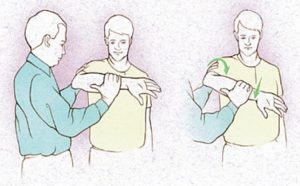Subacromial Decompression for Impingement Syndrome

What is Shoulder Impingement?
When you raise your arm to Shoulder height, the space between the acromion and rotator cuff narrows. The acromion can rub against (or "impinge" on) the tendon and the bursa, causing irritation and pain.
What are the causes of Shoulder Impingement?
Young athletes who use their arms overhead for swimming, baseball, and tennis are particularly vulnerable. Those who do repetitive lifting or overhead activities using the arm, such as paper hanging, construction, or painting are also susceptible.
Pain may also develop as the result of a minor injury. Sometimes, it occurs with no apparent cause.
Symptoms
Early stages:
- Minor pain that is present both with activity and at rest
- Pain radiating from the front of the Shoulder to the side of the arm
- Sudden pain with lifting and reaching movements
- Athletes in overhead sports may have pain when throwing or serving a tennis ball
Later Stages:
- Minor pain that is present both with activity and at rest
- Pain radiating from the front of the Shoulder to the side of the arm
- Sudden pain with lifting and reaching movements
- Athletes in overhead sports may have pain when throwing or serving a tennis ball
Clinical Examination:
The below two test will yield pain in the patient

Neer Impingement Test

Hawkins Impingement Test
Investigations :
Outlet view of the Shoulder and MRI defines the 3 types of Acromion as well as the distance between the the Acromion and the Humeral Head.





Treatment
Conservative Line of Treatment:
- Rest to the Shoulder
- Non-Steroidal Anti-inflammatory Medications
- Stretching and release of Muscles and Capsule
- Steroid Injection in Subacromial Space

Surgical Treatment:
Arthroscopic Subacromial Decompresion is a procedure in which surgical instruments are inserted into two or three small puncture wounds around your Shoulder. Your doctor examines your Shoulder through a fiberoptic scope connected to a television camera. He or she guides the small instruments using a video monitor, and removes bone and soft tissue. In most cases, the front edge of the Acromion is removed along with some of the bursal tissue.
Your surgeon may also treat other conditions present in the Shoulder at the time of surgery. These can include arthritis between the clavicle (collarbone) and the Acromion (Acromioclavicular Arthritis), inflammation of the biceps tendon (biceps tendonitis), or a partial Rotator Cuff Tear.
